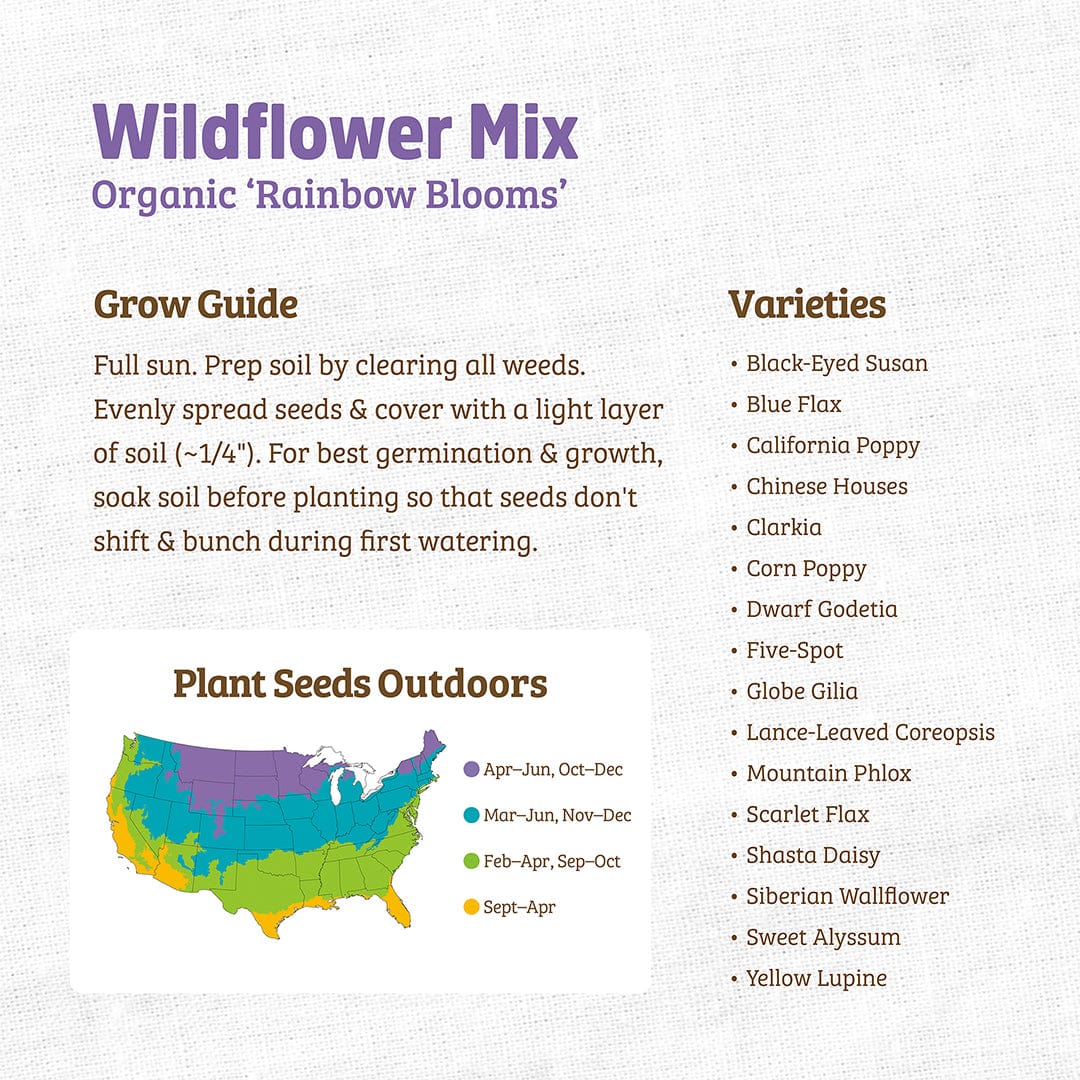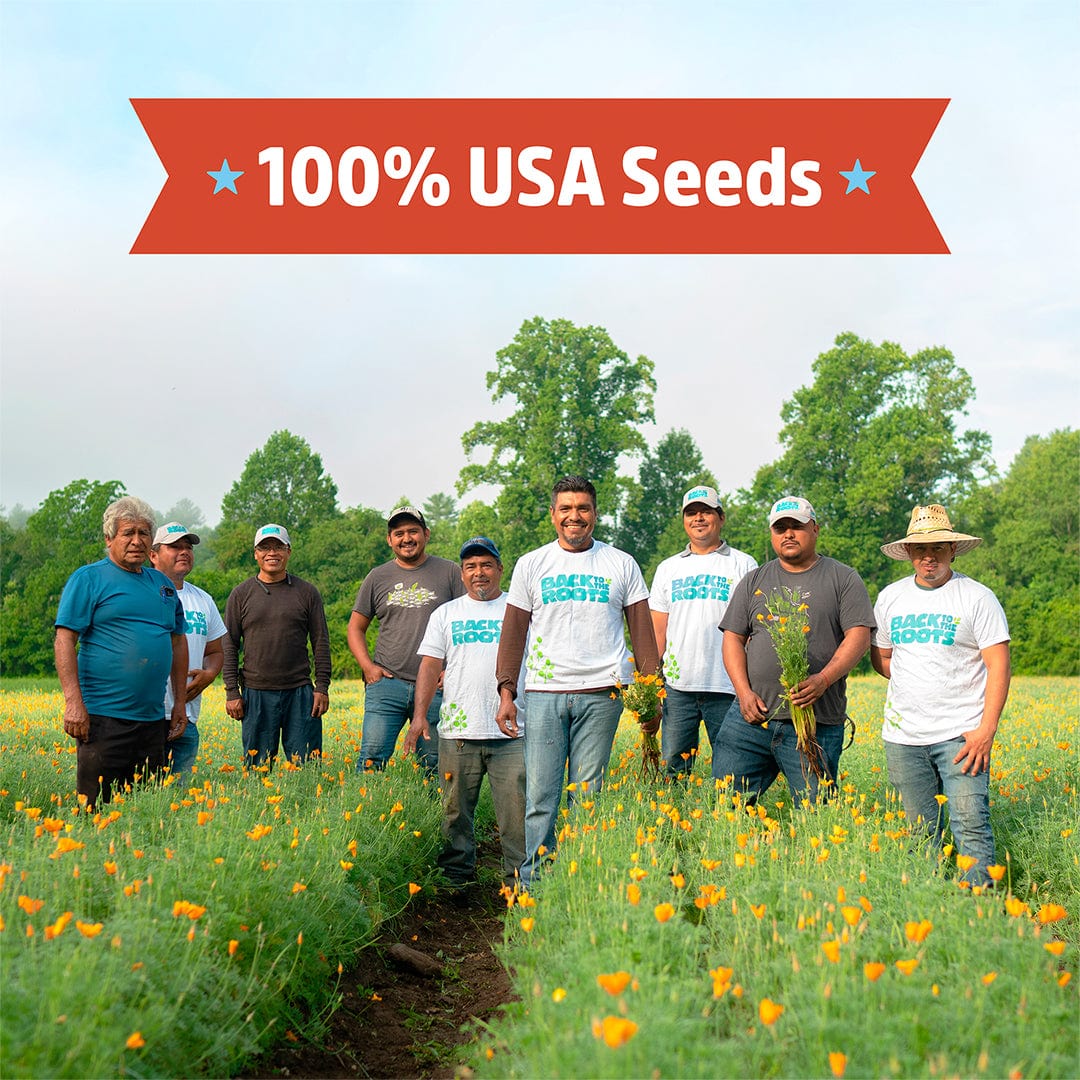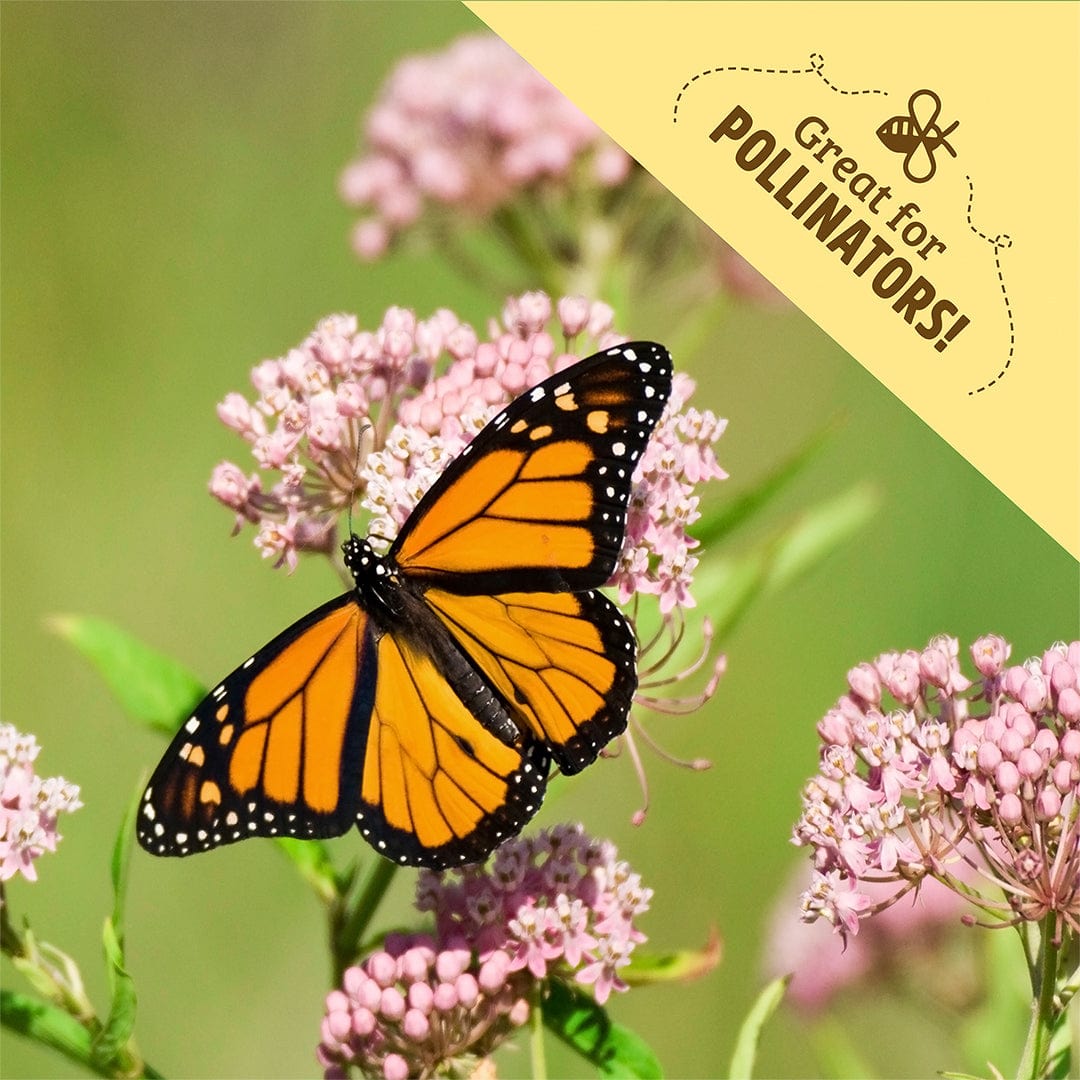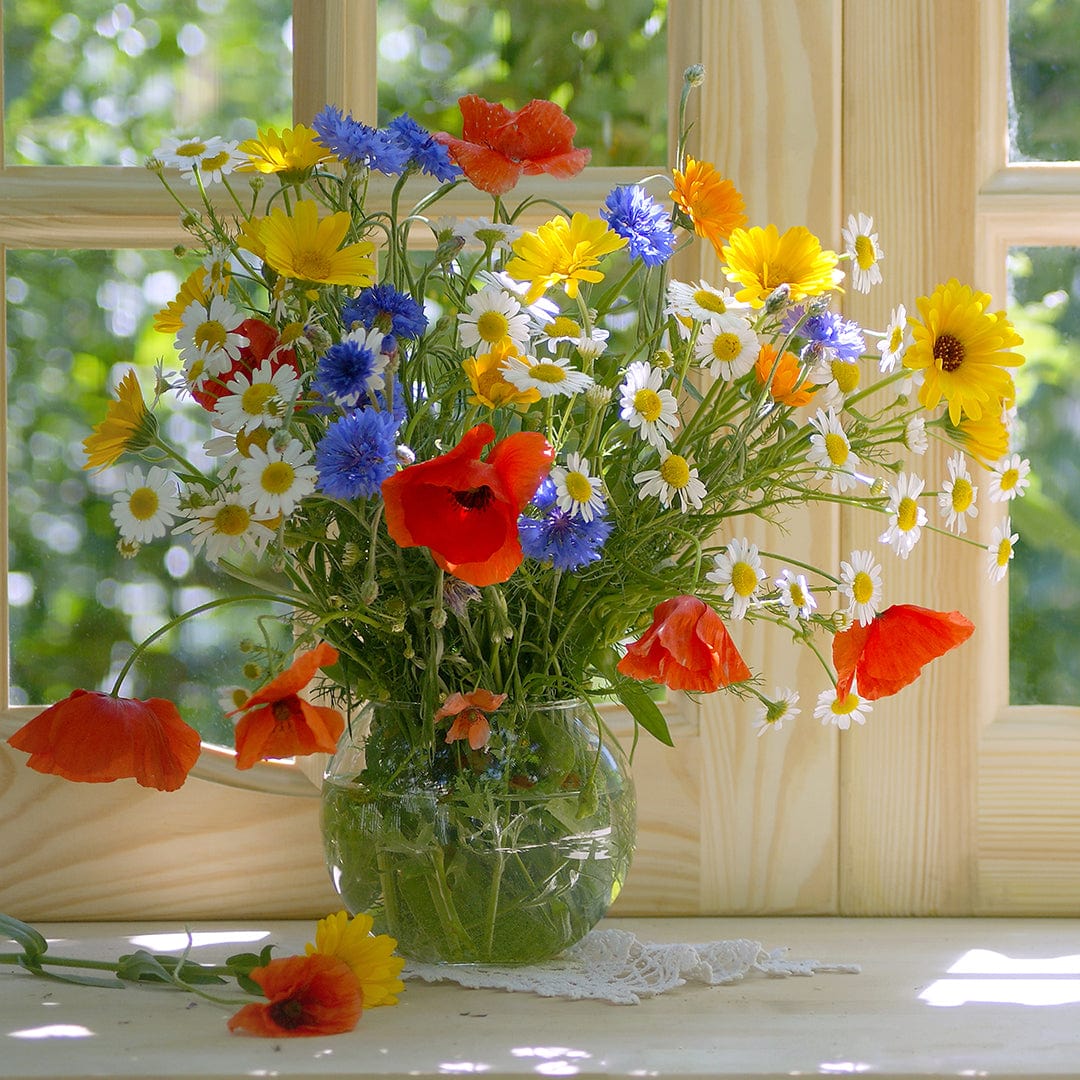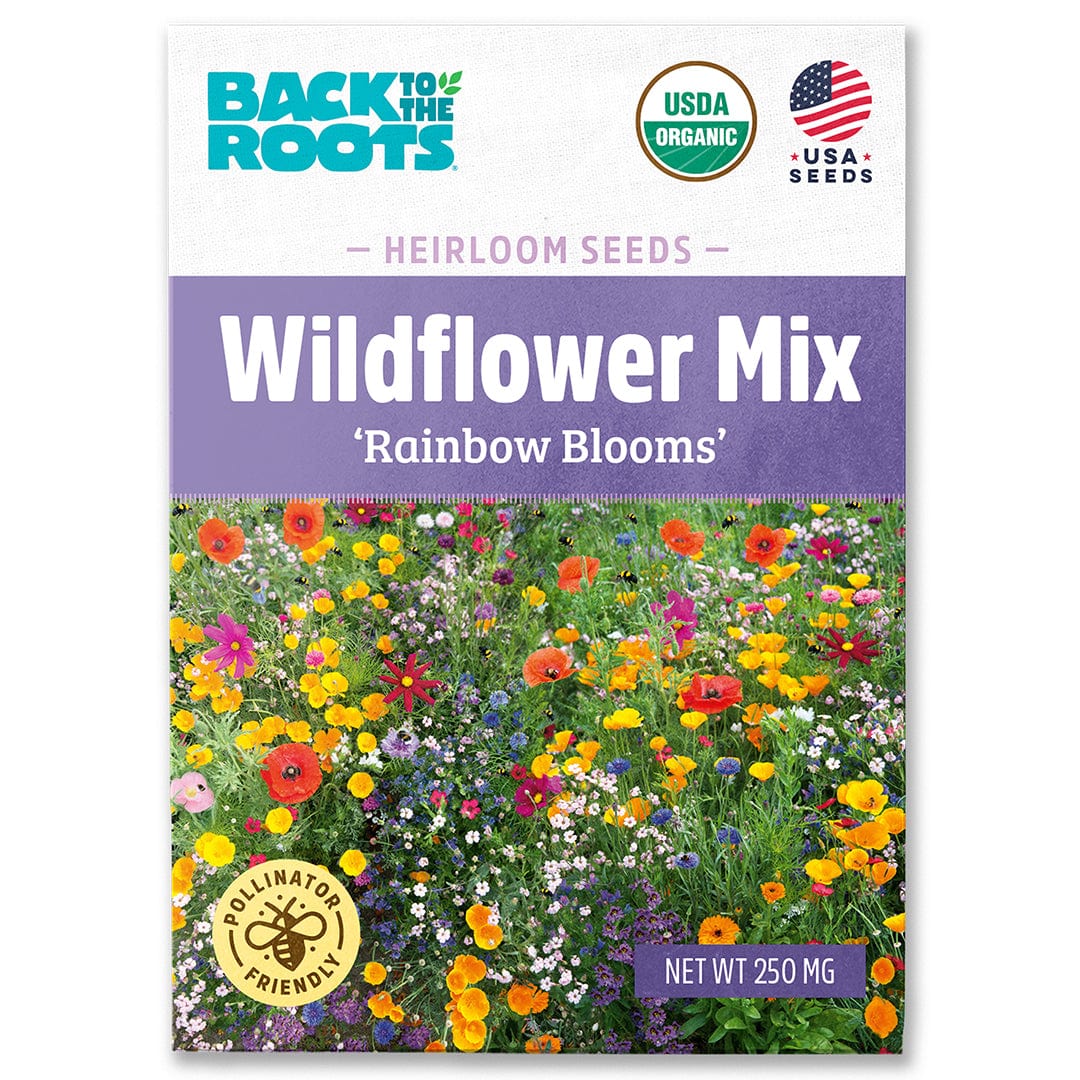



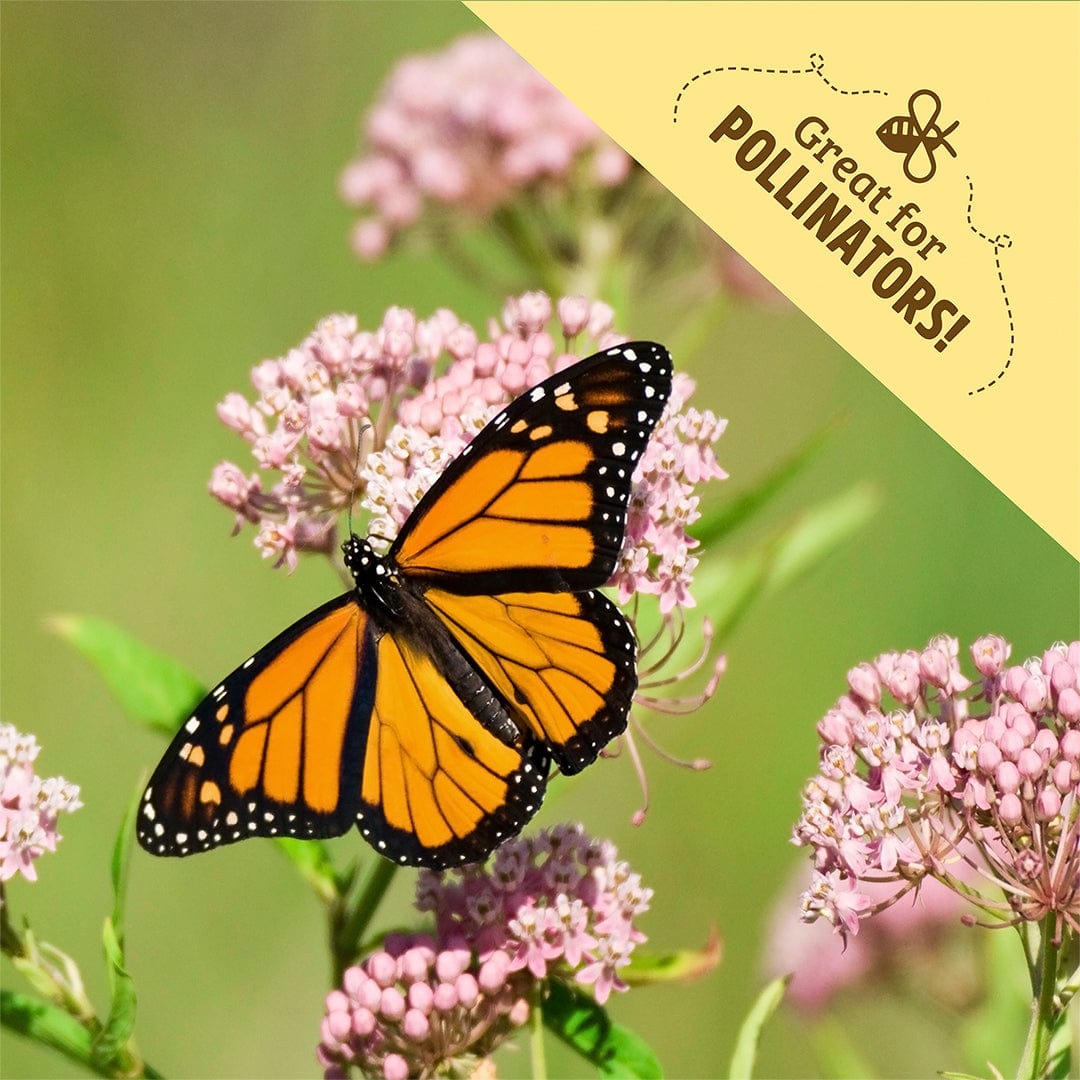
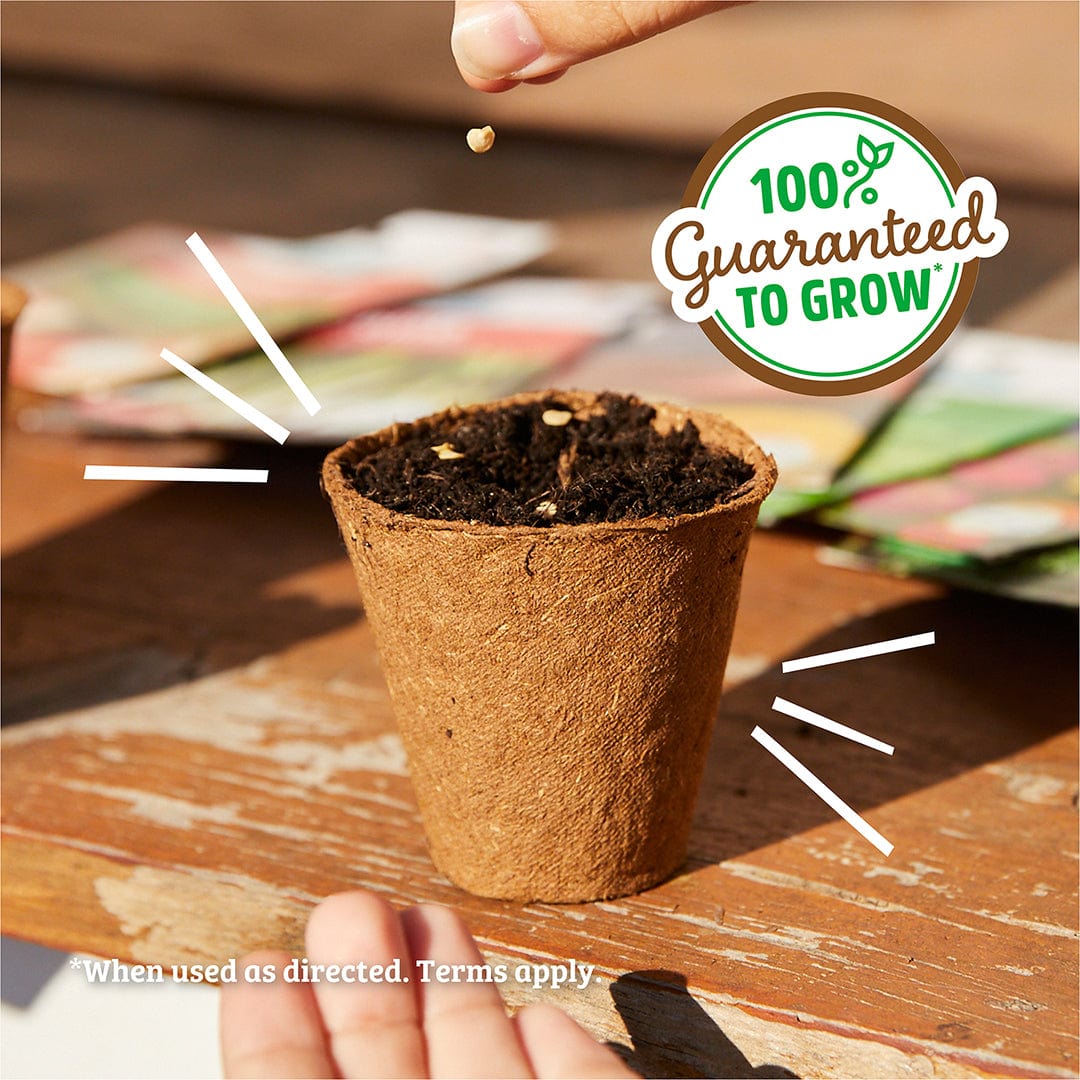

Organic Wildflower Seeds — 'Rainbow Blooms'
Overview
This 20 variety blend of vibrant annuals and perennials are easy to grow in any climate.
13% Five-Spot, 10% Wallflower, 10% Scarlet Flax, 8% Lance-Leaved Coreopsis, 8% California Poppy, 8% Yellow Lupine, 8% Blue Flax, 8% Bigleaf Lupine, 5% Chinese Houses, 5% Baby Blue-Eyes, 5% Corn Poppy, 2% Shasta Daisy, 2% Tidy-Tips, 1% Dwarf Godetia, 1% Clarkia, 1% Phlax, 1% Sweet Alyssum, 0.5& Black-Eyed Susan
Conditions
Choose a sunny spot (6+ hours of direct sunlight) with well-drained soil.
Planting
Plant seeds outdoors in early spring or late fall, loosen the soil to a depth of at least 3" by raking the area. For best germination & growth, soak soil before planting so that seeds don't shift & bunch during first watering. Scatter the wildflower seed mix lightly and evenly over the soil's surface. Use our grow calendar tool to find specific planting dates for your region! Gently rake the area to promote contact between the seeds and soil. Lightly press down to secure the seeds, making sure they are no deeper than 1/4" into the soil. Keep the soil consistently moist 3 to 4 weeks until germination, then water as needed.
Care
Regularly inspect the area for weeds, especially during the early stages of growth. Remove competing weeds to allow wildflowers to flourish. Deadheading (removal of old flowers) to encourage continuous flowering and prevent the plant from putting energy into seed production. However, if you want the wildflowers to self-seed, allow some to go to seed.
Pets and Disease
Wildflowers are generally resistant to pests and diseases, but monitor for any issues. In case of problems, use organic methods to control pests and diseases to minimize environmental impact, (e.g., prune affected areas, thin to improve air circulation), and water at the base rather than overhead to minimize conditions favorable for fungai diseases.
Harvest
Opt for early morning or late afternoon to cut wildflowers when they are well-hydrated and temperatures are cooler. Use sharp scissors or pruning shears to make clean, angled cuts (this helps prevent crushing the stems, ensuring better water uptake) above a leaf node or bud. This encourages branching and additional blooms.
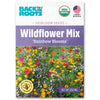
Organic Wildflower Seeds — 'Rainbow Blooms'



